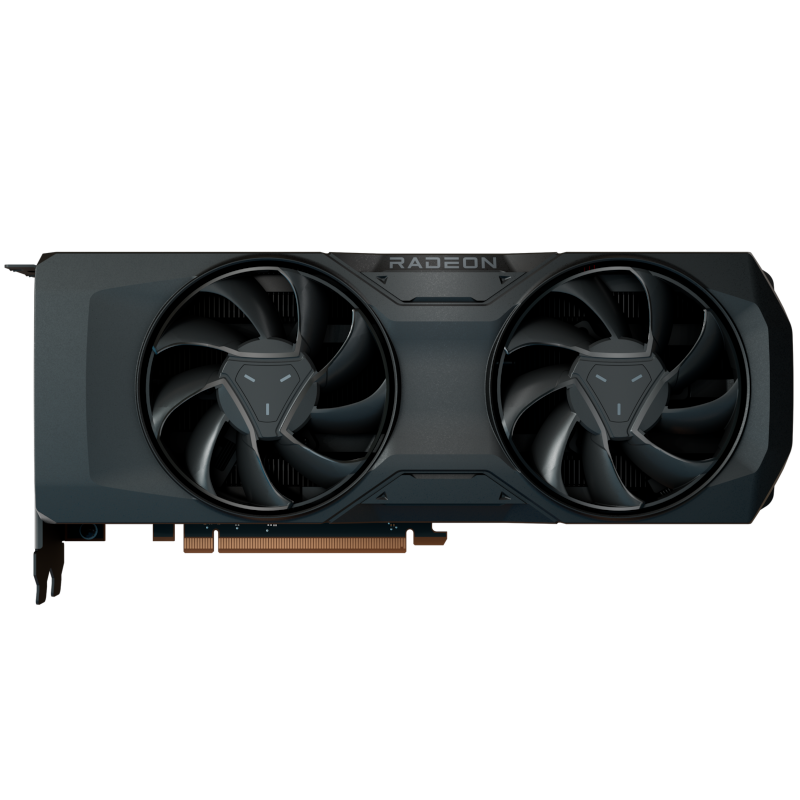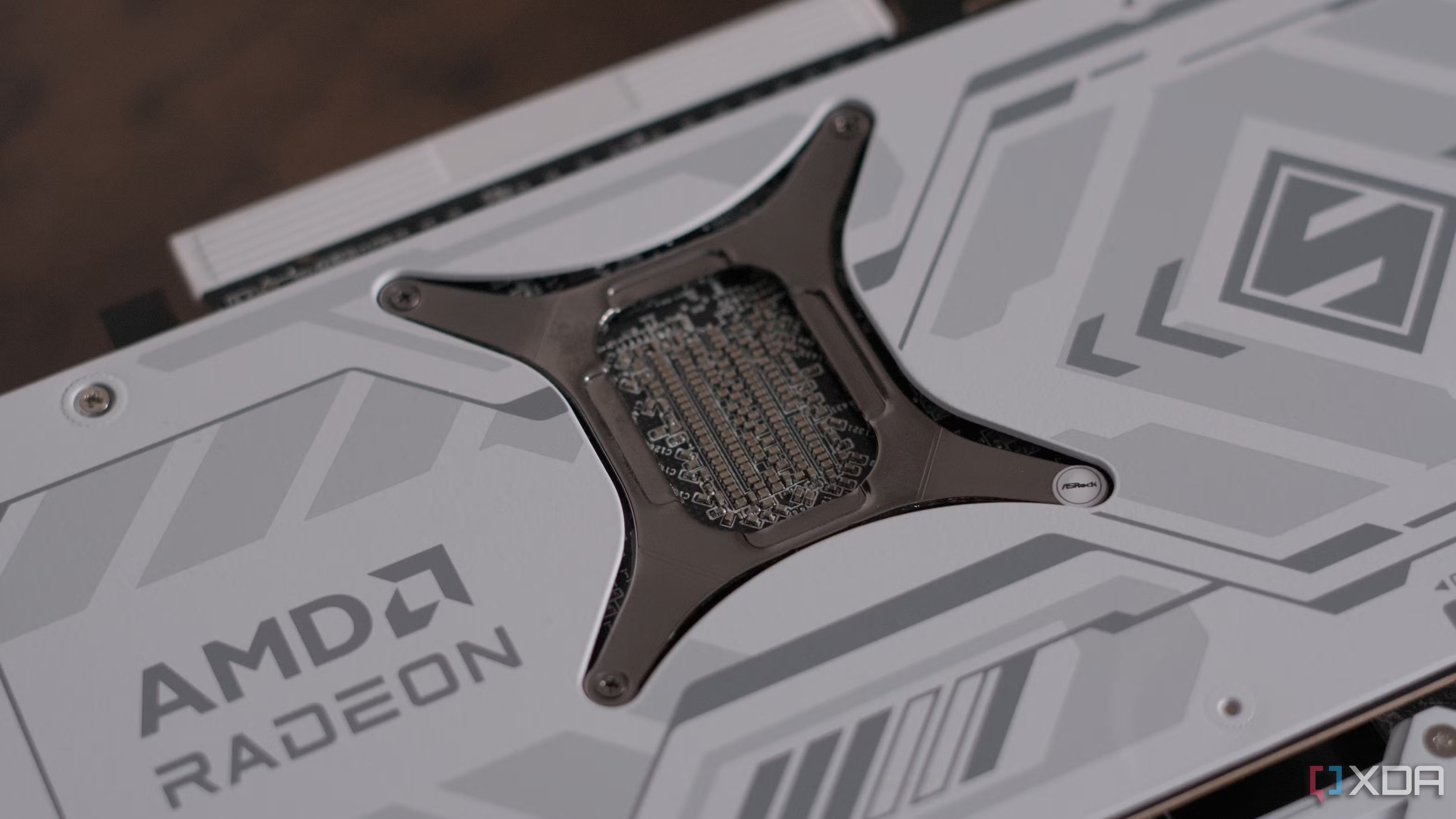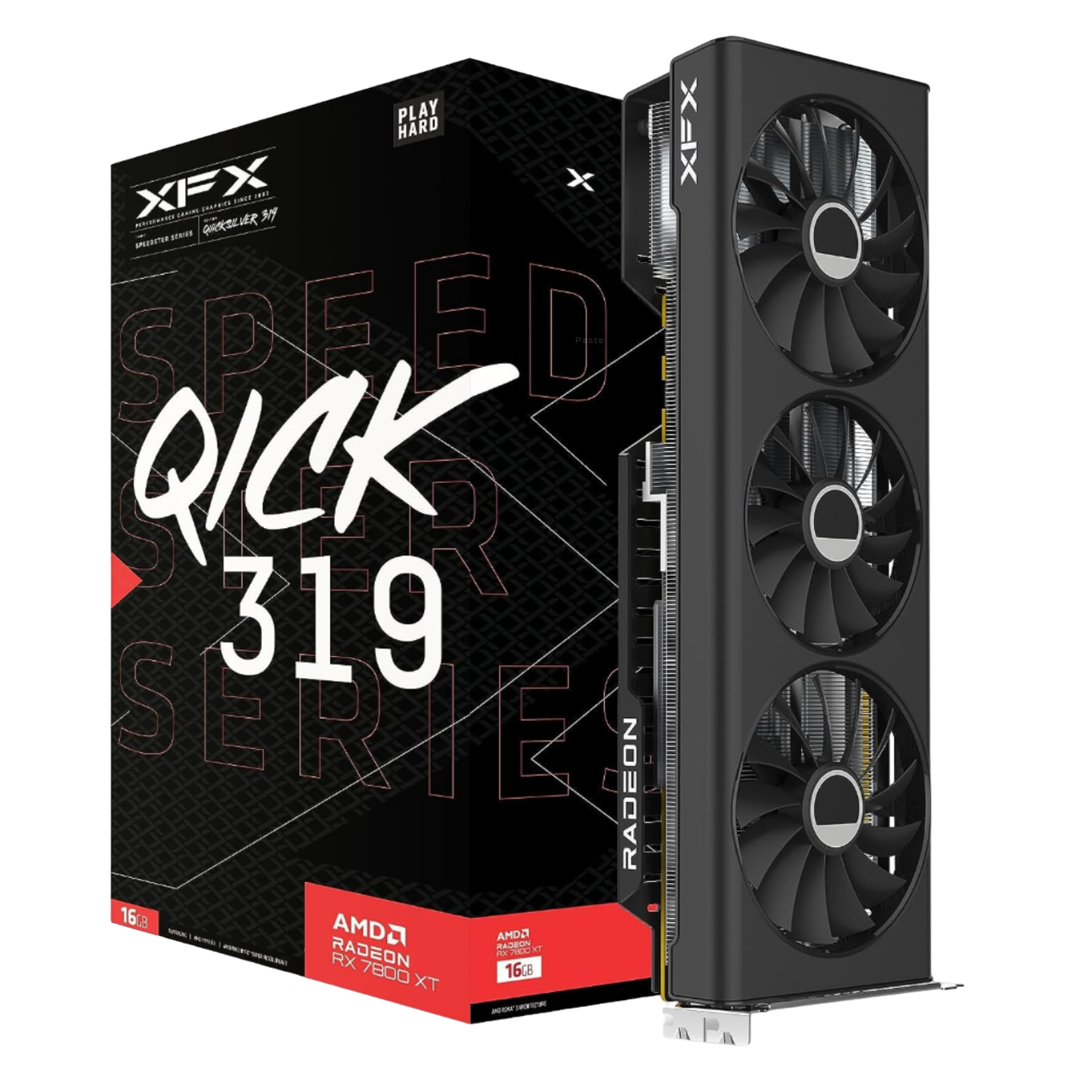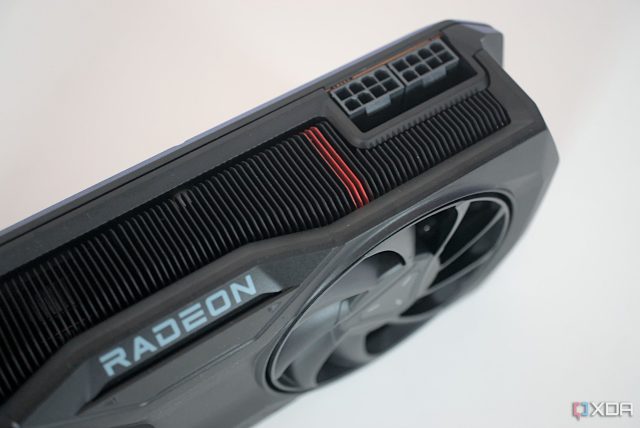Despite its fair share of controversy, Nvidia’s recent RTX 5060 Ti is a solid GPU, assuming you spring for the 16GB model and can find a model near list price. It’s certainly one of the most impressive GPUs Nvidia has released this generation, but it faces some stiff competition from AMD. No, I’m not talking about the RX 9070 XT, which is next to impossible to find at list price. I’m talking about last-gen’s RX 7800 XT.
It’s a generation older, but the RX 7800 XT puts up an impressive fight against the RTX 5060 Ti, especially considering where prices are today. You’ll need to shop around to find an RX 7800 XT secondhand, but if you’re able to find one, you’re in for a treat.
-

AMD Radeon RX 7800 XT
The king of AMD’s RX 70 series graphics cards for 1440p gaming, this is the GPU you should buy if you’re after butter-smooth 2K performance. The AMD Radeon RX 7800 XT is also fairly good at 4K gaming, especially when paired with FSR.
Pros & Cons- Excellent 1440p performance
- Good 4K performance
- DisplayPort 2.1 and AV1 support
- Ray tracing is poor compared to RTX 4070
-

Asus Prime GeForce RTX 5060 Ti
Nvidia’s RTX 5060 Ti doesn’t provide a massive generational uplift, but it hits the sweet spot on pricing and performance with DLSS 4 at the helm.
Pros & Cons- DLSS 4 enables otherwise impossible performance
- Large price cut on 16GB model
- Single, 8-pin power connector
- Falls short of the RTX 4070
- 16GB frame buffer still uses a 128-bit bus
RX 7800 XT vs RTX 5060 Ti: Specs
Both are 16GB GPUs, but they’re built differently
-
AMD Radeon RX 7800 XT Asus Prime GeForce RTX 5060 Ti Shader Units 4,608 4608 Ray Accelerators/Cores 60 36 AI Accelerators/Cores 120 144 Base Clock Speed 2,124MHz 2407MHz Boost Clock Speed 2,430MHz 2572MHz Memory Capacity 16GB GDDR6 16GB GDDR7 Memory Bus 256-bit 128-bit Memory Bandwidth 624.1GB/s 448GB/s Power Draw 263W 180W Architecture RDNA 3 Blackwell Process 5 nm, 6 nm 5nm
The RX 7800 XT and RTX 5060 Ti come from two entirely different architectures and generations, so it isn’t worth comparing most of the specs directly. There are three important areas: memory, power, and process. On the process front, both the RTX 5060 Ti and RX 7800 XT are built on a 5nm node, despite Nvidia’s GPU being a generation newer. There’s normally a node shrink with each new generation, but Nvidia decided to stick with the same 5nm node with its Blackwell GPUs that it used with its last-gen Ada Lovelace options.
The more significant differences come in power and memory. On the memory front, both cards are equipped with a 16GB frame buffer, but the RTX 5060 Ti uses newer, faster GDDR7 memory. Despite that speed advantage, the RX 7800 XT comes out significantly ahead in overall memory bandwidth. The RTX 5060 Ti uses a 128-bit bus to account for an 8GB version of the same GPU. The RX 7800 XT doesn’t have that constraint, so it uses the full-sized 256-bit bus for the 16GB of VRAM on the card.
That’s not a free advantage for the RX 7800 XT. It comes at the cost of increased power draw. The RX 7800 demands 80W more than the RTX 5060 Ti, which isn’t insignificant. You’ll be fine with either GPU assuming you have at least a 600W power supply, but those highly concerned with electricity costs are better off with the RTX 5060 Ti, despite its memory bandwidth disadvantage.

Related
PSA: Avoid GPUs with 8GB of VRAM in 2025
They’re not enough for today’s standards
A pricing nightmare puts the RX 7800 XT and RTX 5060 Ti in contention
You’ll need to shop around for a decent deal on either
The pricing situation for the RTX 5060 Ti and RX 7800 XT is complicated. Like all GPUs in 2025, it’s difficult to find either card in stock at retailers, and even more difficult to find them at list price. The RTX 5060 Ti is newer, and it’s not very popular, so you have a better chance of finding it in stock for somewhere near list price. You’ll need to shop around regardless, however.
Despite a list price of $430, the 16GB RTX 5060 Ti isn’t selling for anywhere near that. Even on release day, the cheapest models in stock sold for $480. Now, I’m seeing prices anywhere from $500 to $560 for the few models in stock. It’s not worth resorting to the secondhand market at this point, though that could change once the remaining inventory sells out. On eBay, prices are between $600 and $800, with models usually landing closer to $650.
The RX 7800 XT is older, so you shouldn’t expect to find it in stock at online retailers like Newegg. There, listings sit around $700 from third-party sellers. However, my local Micro Center has 18 RX 7800 XTs in stock for $590. If you can make it out to a Micro Center or Best Buy, you’ll have better luck tracking down an RX 7800 XT. Exclusively online retailers have sold through their inventory, and there are no signs that the card will be restocked.

Related
4 GPUs you should buy instead of the RTX 5060 Ti
Multi-Frame Gen is great, but there are GPUs around the same price that offer better performance.
Although the age of the RX 7800 XT means it’s more difficult to find in stock, it also means that there’s a vibrant secondhand market. There are a ton of listings on eBay for the card that fall between $550 and $600. It’s hard to say where prices will be in a few months, but the RX 7800 XT has remained around that price for the majority of its life.
Depending on what deals you can find, you’re looking at somewhere around a $50 to $100 premium for the RX 7800 XT over the RTX 5060 Ti, which isn’t much different to the jump in list price ($430 versus $500). The RTX 5060 Ti wins here because it’s cheaper, but the math can quickly change in favor of AMD depending on what deal you can track down.
Two different performance classes
AMD runs away with raw frame rates
The RX 7800 XT is a generation older than the RTX 5060 Ti, but it’s also a class higher. In the previous generation, it competed with the RTX 4070 and RTX 4070 Super, which should mean that it falls in line with the RTX 5060 Ti. That’s not the case. AMD’s last-gen card offers far better performance across games, despite the fact that you can find the RX 7800 XT for around the same price as the RTX 5060 Ti.
To set the stage, here are a couple of synthetic benchmarks:
|
RTX 5060 Ti |
RX 7800 XT |
|
|---|---|---|
|
3DMark Time Spy |
15635 |
17913 |
|
3DMark Port Royal |
10326 |
10202 |
Although you shouldn’t rely on 3DMark results alone, the numbers here largely mirror what you can expect in real games. The RX 7800 XT was 15% ahead in the rasterized Time Spy, and it managed a score just a hair short of the RTX 5060 Ti in Port Royal, which is a benchmark with ray tracing.
Obviously, the performance improvement in real games varies more from title to title, but the RX 7800 XT managed a win in every game I tested short of Black Myth: Wukong. There’s only a difference of a few frames across resolutions, but it makes sense that Nvidia would take the lead in this game. Wukong is built in Unreal Engine 5, and it has ray tracing baked into certain elements of the game.
|
RTX 5060 Ti (16GB) |
RX 7800 XT |
|
|---|---|---|
|
Assassin’s Creed Mirage (Ultra High) |
|
|
|
Cyberpunk 2077 (Ultra) |
|
|
|
Black Myth: Wukong (Cinematic/DLSS@68%) |
|
|
|
Dying Light 2 (High Quality) |
|
|
|
Returnal (Epic) |
|
|
|
Forza Motorsport (Ultra) |
|
|
|
Horizon Zero Dawn Remastered (Very High) |
|
|
It’s difficult to put too much weight on the results in Black Myth: Wukong, though. The RTX 5060 Ti and RX 7800 XT are competitive in games like Forza Motorsport, Cyberpunk 2077, and Dying Light 2, but the RX 7800 XT runs away with the crown in Horizon Zero Dawn Remastered, Returnal, and Assassin’s Creed Mirage. Those small advantages combined with a few big leaps add up to quite the performance improvement over the RTX 5060 Ti overall.
Across all the benchmarks here, I’m testing the 16GB RTX 5060 Ti, as well. The RX 7800 XT comes with 16GB of VRAM, too, so both cards are able to hold up at 4K. If you opt for the cheaper 8GB RTX 5060 Ti, expect lower performance in recent games like Indiana Jones and the Great Circle, which can stress your frame buffer. 4K isn’t really an option for 8GB graphics cards, either. The RTX 5060 Ti is decent with the 16GB version, but it’s extremely difficult to recommend when looking at the 8GB model.
Nvidia and AMD switch places when looking at ray tracing. AMD made major strides in ray tracing with the release of the RX 9070 XT, but the older, RDNA 3-based RX 7800 XT doesn’t benefit from those advancements. Still, the RX 7800 XT is shockingly competitive with the RTX 5060 Ti. Nvidia still holds a clear lead in ray tracing, which is even more true when looking at demanding path tracing in games like Alan Wake 2.
|
RTX 5060 Ti (16GB) |
RX 7800 XT |
|
|---|---|---|
|
Cyberpunk 2077 (Ultra RT) |
|
|
|
Returnal (Epic RT) |
|
|
|
Dying Light 2 (High Quality RT) |
|
|
Although the RX 7800 XT is competitive, the RTX 5060 Ti is certainly the better option for ray tracing. It offers faster raw performance, but it also benefits from DLSS Multi-Frame Generation (MFG). That feature makes games like Half-Life 2 RTX possible, which would otherwise be too demanding from this class of hardware. You can use tools like Lossless Scaling to help close the gap with the RX 7800 XT, but the RTX 5060 Ti is still better suited for ray tracing applications.

Related
4 ways FSR 4 gives DLSS 4 a run for its money
FSR is no longer an afterthought for gamers
Which one should you buy?
The RTX 5060 Ti comes with some advantages over the RX 7800 XT between its lower price, access to MFG, and higher ray tracing performance. For most gamers, though, the RX 7800 XT is the GPU to buy. It offers better raw performance, surprisingly capable ray tracing performance, and you can easily find it secondhand for around $550. Tools like Lossless Scaling can help make up for the lack of MFG, as well, not to mention AMD’s driver-based Fluid Motion Frames that can inject frame generation into nearly any game.

XFX Speedster QICK319 RX 7800 XT
For most gamers, the RX 7800 XT is the right choice. Don’t discount the RTX 5060 Ti, though. The card has built up some ill will from the PC gaming community due to Nvidia’s deceptive marketing this generation, but it’s still an excellent GPU that makes high-end gaming experiences possible with the inclusion of DLSS 4 and MFG. However, to unlock those experiences, you trade some raw performance in other titles, at least compared to the RX 7800 XT.

Asus Prime GeForce RTX 5060 Ti











